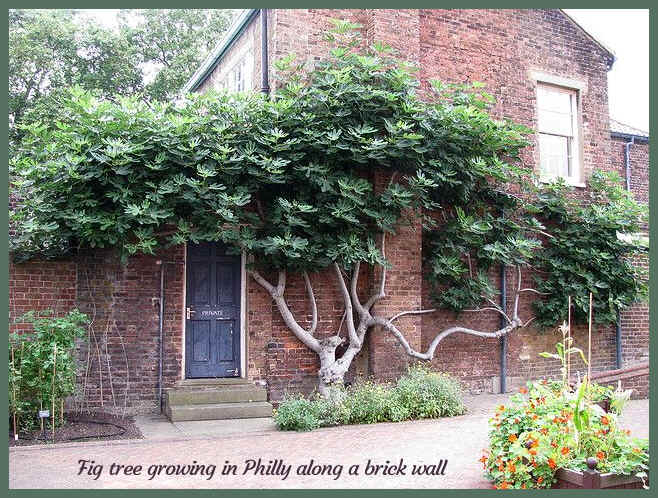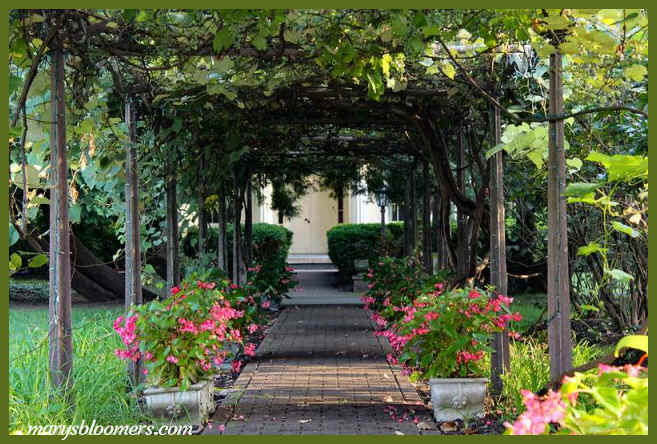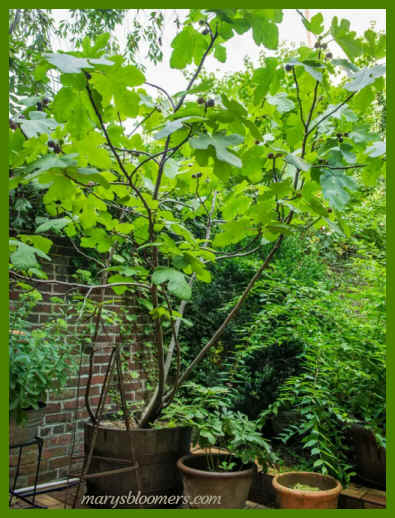 |
|
Generations
ago, they
arrived in suitcases,
steamer trunks, and sewn into coats and pockets.... Starting in the late 1800s, when Italian immigrants poured into U.S. port cities, the Mediterranean trees set down their roots in unexpected places: Astoria, Cleveland, Pittsburgh, Bayonne - all cities whose cold-weather climates were known to be hostile to the warm weather plant. Yet the trees grew, even if their owners had to wrap them in burlap or bury them underground so they’d survive the cold winters.
Best spot: Along a south-facing wall. Why would someone try so hard to grow a Mediterranean tree in such an unfriendly climate? A generation of turn-of-the-century Italians who immigrated mostly from agricultural Southern Italy to American cities like New York, brought their future American dream garden with them in their luggage and clothing. Italian Americans grew kitchen gardens as a means of survival, and a way of accessing beloved Mediterranean produce. The tradition persisted with later generations of immigrants. For agricultural people in Southern Italy, a fig tree offered a source of fruit that could be dried and kept for lean times. The Mediterranean trees became a symbol of adaptation and survival. I am of Italian descent, my family, and almost all of my neighbors, were immigrants or children of immigrants, who landed in NYC in the 50's. I heard the stories, and witnessed their unique gardening methods.... Other cultures that connect to the fig tree include Greek and Turkish Americans. The other Mediterranean heirlooms that also found their way into the country in suitcases generations ago, were Sicilian saucer tomatoes, dozens of varieties of chicory, bitter broccoli rabe. But the first thing most Italian immigrants planted were the fig trees. It was good luck for the family to have one growing in the yard and producing figs. They also brought fig tree cuttings for their American relatives to plant. Cuttings of the fig tree are handed down through the generations. You can still identify historically Italian neighborhoods by the presence and number of backyard fig trees. The one thing we don't know for sure, is the name of the varieties of most of the fig trees that traveled here.
Sculptures of the Madonna guard many Italian-American gardens. Most Italian gardeners watch their fig trees like hawks, and cover young fig clusters in old mesh onion bags so that the birds won’t see or get to them. A Tree Grows In Brooklyn..... and Queens, Staten Island and New Jersey. It is estimated that in Astoria, Queens, NYC, at least one-third of the homes are inhabited by those of Italian descent, and they have a fig tree, or more often two, in their yards. Along with the traditional statue of the Madonna keeping watch and bestowing blessings. By all accounts, fig trees don't belong in New York City. It's just too cold, even for the hardiest varieties. But grow here, they do. And in most cities in the northeast. Gardening wisdom and research says you can't, but obviously, there's room for argument. With climate change accelerating, it won’t be long before citrus and even banana plants may overwinter in some northern protected gardens. An odd phenomenon in city neighborhoods growing fig trees is the prolific crop of one neighbor's tree, while another neighbor's gives up the ghost, even with the same care and climate. Some superstitious neighbors believed that the absence of statues of saints and religious icons within the garden was the reason for the fig's failure to survive. An custom in the 1950's and '60's Italian gardens in was the iconic Virgin Mary statue lovingly watching over the garden, usually housed in a homemade grotto. Vases of beautiful garden flowers were placed at her feet. There are probably many of these statues and other homemade religious icons still gracing the gardens of generations of Italian Americans. For a fascinating look at a sacred garden design, learn how you can design and grow a traditional, dedicated Mary Garden as a lovely retreat within your landscapes. Younger generations might also add a statue of St. Francis and St. Fiacre....patron saints of gardens and gardeners. I have small sculptures of Mary and Francis, along with angels, displayed among the flowers in my front garden. |
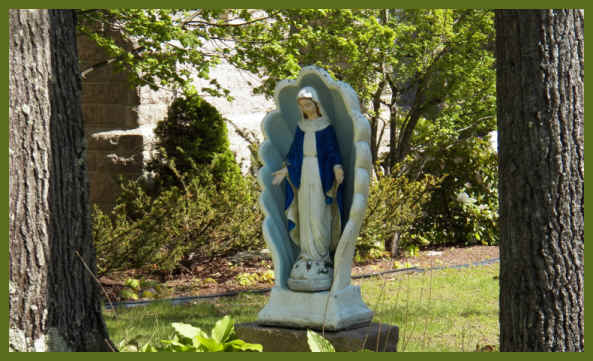 |
Look into teeny backyards, between buildings, and down the narrow alleyways of Italian neighborhoods in the fall. There, you'll find hundreds of leafy, thriving fig trees heavy with ripe fruit. The trees were planted not just by Italians, who came to the neighborhood after World War I, but also by Greeks. If you owned a home and had a backyard, you grew figs. Because they are not suited to New York's and other northeast cities' winters, fig trees are said to require special care. They must be wrapped or mulched at least, to keep them warm. Cold weather isn't the only danger to the finicky fig. If you have a freak warm spell during the winter, the trees must be unwrapped or they'll rot. Many immigrants never bothered to wrap the tree or otherwise give it any special care. Still, their trees are flourishing, even after severe winters. Even with the benign neglect, just about all of the fig trees in Astoria, NY are amazingly hardy and prolific. |
 |
| When I was growing up in the Italian neighborhood of Bensonhurst, in Brooklyn, NY in the 1960's, the winter months were much colder than they are now. And I always saw the fig trees coming to life after their unwrapping, and thriving in Spring. Of course, most spent the winter with a heavy burlap shroud and a bucket sitting on their heads, or were bent, tied and trenched in the ground, looking like the unfortunate trees in the aftermath of a tornado. I've wanted to grow a fig tree for many years, I adore figs, but I shied away from the perception I grew up with of the work and space requirement it would entail, and how long i'd have to wait to bite into one of those sweet treats. I should have started a decade ago and used them in a backyard orchard plan. Last fall, I experienced one of my favorite fruit appetizers - a sweet, ripe fig wrapped in prosciutto, and that pushed me into it this season. Over the years, more cold hardy and dwarf fig trees were developed. Now is the time for me to attempt it. Better late.....I have 3 potted dormant fig trees posing in my dining room, waiting to go outside this Spring. They are the Chicago Cold Hardy fig and Brown Turkey fig varieties. Presumed to be hardy in my planting zone. |
|
|
|
Although not native to the chilly northern U.S, figs have been grown here since the immigrants from Italy and Greece brought them to our shores centuries ago. You can grow the less hardy varieties in containers that can overwinter in a cool garage or, unheated basement or shed. Figs like poor soil, and it's not often a gardener will hear those sweet words. Planting them in a rich, organic soil that will hold lots of moisture means death to a fig tree. In Greece, they’re grown on solid limestone hills, and they’re never fertilized. They don't like acidic soils, either. So if you plant them in the ground, don't plant them with acid-loving shrubs or trees, and resist the urge to feed and coddle them. Many Italians protected their fig trees from winter by first tying branches with electrical wire, then wrapping the tree with a layer of roofing or tar paper, and a layer of canvas or burlap, before stuffing the fig tree package with dry leaves. An overturned pail or bucket crowns the tree to keep that insulation dry for the winter. We've all seen the fig tree sarcophagus in someone's yard during the winter. To protect young trees, some Italian gardeners actually bury them underground. The burials are done after the tree's leaves drop, but before the ground freezes. Trenching is a good way to protect the fig trees in winter. Young fig trees are flexible and bendy, and they can be bent without breaking. The gardener digs a trench, cuts through some of the roots with a sharp spade to partially unhinge the tree, then shoves the tree into the trench. The saplings are suspended by their roots in the trench all winter, insulated with leaves and covered with plywood, and bounce back nicely when set free in spring. Soil is added to gaps and tamped down, and cuyt roots settle back in. Here
are instructions
for wrapping your fig trees from the Brooklyn Botanic Garden. Container-Grown Figs
You can grow fig trees in just about any large size pot or container. Once the plants have grown out to fill their container, you will need to repot and root prune every third year or so. This is best performed in late winter or early spring before growth has begun. Winter protection is as easy.... just move the containers into a basement or unheated garage after their leaves have dropped in fall. Temperatures in the storage area should not go below 25 degrees or exceed 50 degrees (you want them to stay dormant). While they are dormant, the figs will need minimal watering, only every 3 weeks or so. Bring the figs back outdoors in the spring after the threat of freezing weather has passed. Container growing allows you to grow figs on patios, decks, and rooftops and close together. The easiest way to prepare your fig tree for winter: The majority of fig tree gardeners say that the simplest proven method is just to put down a very heavy layer of mulch (fallen leaves, salt hay, wood mulch) around the base of the fig tree to protect the roots. Temperatures below 15 degrees will likely winterkill the branches, but the fig will regrow from its roots and often fruit in the same year. While there is a risk of the trees freezing to death over the winter if not properly insulated, even frozen trees almost always grow back from the root. And you can grow back to square one. Note: if you're going the mulch route, keep your eyes peeled for rodent damage, and take steps to eradicate the filthy vermin. |
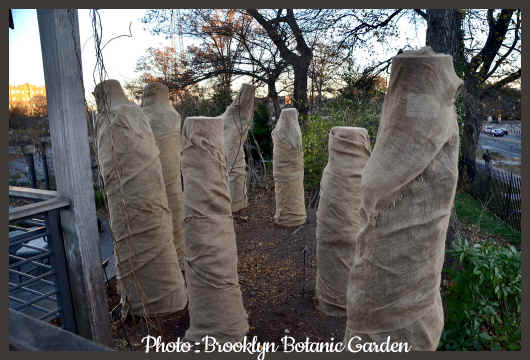 |
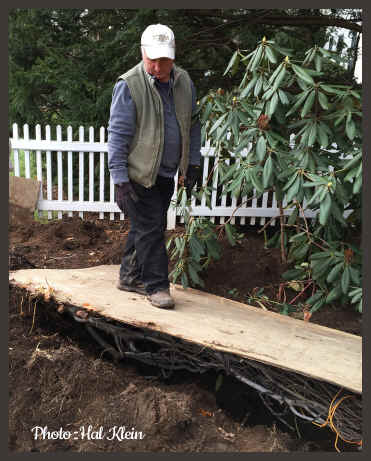 |
Fig Trivia
sources Atlas Obscura |
Quick Links
Content, graphics and design ©2020 marysbloomers.com
This
site uses Watermarkly Software

